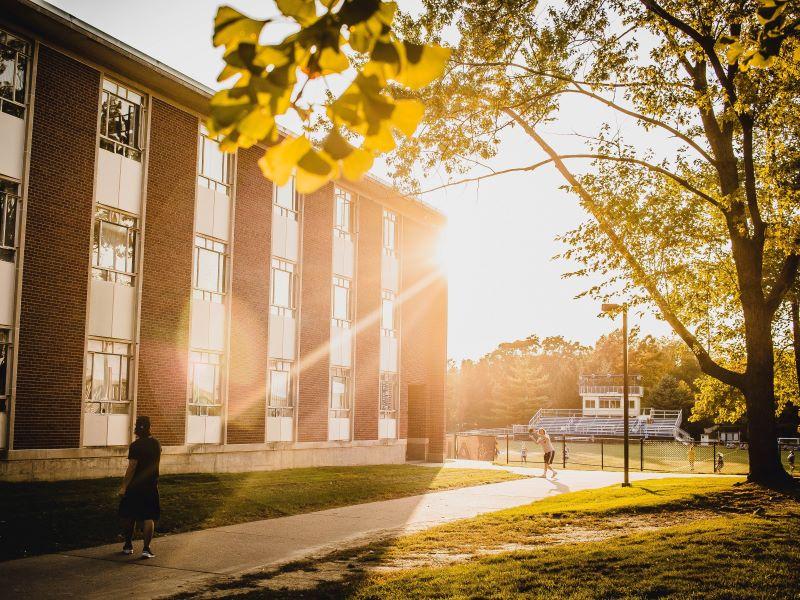When we think of universities, the high value of their brands doesn’t usually spring to mind, nor does how different some universities are from others. Sure, there are those in the Ivy League (US), the Russell Group (UK), C-9 League (China) or Group of 8 (Australia), but these represent a tiny fraction of the 30,000 or so universities in existence globally, and even they are fairly similar to each other. So, how does a university stand out when they all provide the same full-service offering?
Universities could learn from commerce. Old examples of commercial brands include Cola-Cola, Hoover and Xerox, or a more contemporary ubiquitous brand would be Google. Folklore has it that McDonald’s “golden arches” symbol is more recognised worldwide than the Christian cross symbol. But how do commercial brands reach such giddy heights of recognition and what can universities learn from them?
- How to ensure your university’s branding isn’t as bland as blancmange
- What determines the success of an international branch campus?
- Can universities maintain their cultural identity in a blended world?
Sometimes it’s simply a case of spending more than 100 years on prime-time advertising (Coca-Cola); other times it’s being the only serious operator in a niche category (Google, and Hoover for a long time). Sometimes it’s being the inventor of a new category like Apple was with iPods and iPads. For universities, heritage has a lot of impact on a university brand. For example, Oxford was founded in 1096, Harvard in 1636 and Peking in 1898 – and all are in the top 20 of the THE World University Rankings. But age is not enough. Many other old universities are less prestigious. Being massive doesn’t cut it either. Indira Gandhi National Open University serves about 4 million students, the world’s largest student base, but it doesn’t make the top 500 in THE’s rankings.
Since the 1990s, there has been increasing recognition that a firm’s overall value resides not in its physical infrastructure, nor even within its intellectual property, but within its brand. In 2022, Kantar – a marketing firm – valued Apple, the world’s most valuable brand, at a whopping £947 billion. That means if you were to buy Apple, you would pay £947 billion just for the brand, without having bought a single phone, factory or blueprint. Brand values are calculated in different ways, but one way is to estimate what current and future revenues will accrue to the organisation with the current time value of money.
That begs the question as to what universities’ brands are worth. We don’t know because no one like Kantar, Brand Finance or Interbrand has measured them collectively and compared them. If they did, what would such a ranking tell us? It might confirm the status of the “super brand” six, namely that the top dogs are Harvard, MIT, Oxford, Cambridge, Stanford and the University of California, Berkeley.
Given that brand values integrate the expectation of future cash flows, it would have to recognise the importance of the following: winning (very) large research grants in the medical and physical sciences; recruiting large numbers of undergraduate and postgraduate students, particularly in business, law, engineering, medical and health sciences, politics and international relations; and that only a small number of universities capitalise on their intellectual property to spin off and spin out many commercially profitable companies.
A brand ranking would also illustrate that some universities are markedly better than others at recruiting overseas students or building successful overseas campuses, that some are better than others at developing licensing and sponsorship deals, plus which universities are more (or less) capable of attracting high-value philanthropic donations of the transformational kind.
With all that in mind, how should universities seek to differentiate their brands? For starters, some universities still need to embrace a more commercial culture. Many fail to capitalise on the opportunities available to them because they don’t recognise them as opportunities in the first place, or they don’t have the confidence to strike out and try. This means developing a robust commercialisation process to diversify their revenues beyond undergraduate and postgraduate students and research council income. It also means bringing in staff who understand how to plan for, bid for, train staff for and deliver commercial opportunities.
Each university must stand for something unique that others don’t stand for in order to differentiate themselves. Too often, and I take the UK as the prime case, universities want to offer all levels of teaching provision from undergraduate through postgraduate, doctoral to post-experience, in all subjects, including science, arts, social sciences, medical sciences and engineering, and for a majority of their staff to be research-active and publishing in world-class journals accordingly. Now the UK government has encouraged universities to positively impact on their regions, they want to offer that too. All of them.
The glaring problem is that most universities cannot do everything well. They must make much harder choices about what programmes they want to offer, what funding to chase and be more selective about what they offer, including at what level, preferably because they are good at it. Not all universities have to be research-intensive; more could offer sector-specific provision. Why do we not have specialised defence, telecommunications, human health, climate change or energy-focused universities? That would mean universities working to solve the world’s most serious challenges.
Universities must audit carefully what they are good at, including assessing and identifying strengths in the region in which they reside and what the constituencies that they serve want, and build on those strengths. Universities need to transform to meet the world’s challenges. Those that rise to the challenge better than others will differentiate themselves and build their brand value.
Paul Baines is professor of political marketing at the University of Leicester, UK. He is a co-author of Marketing (6th edition, Oxford University Press, 2022).
If you found this interesting and want advice and insight from academics and university staff delivered direct to your inbox each week, sign up for the THE Campus newsletter.



comment1
(No subject)